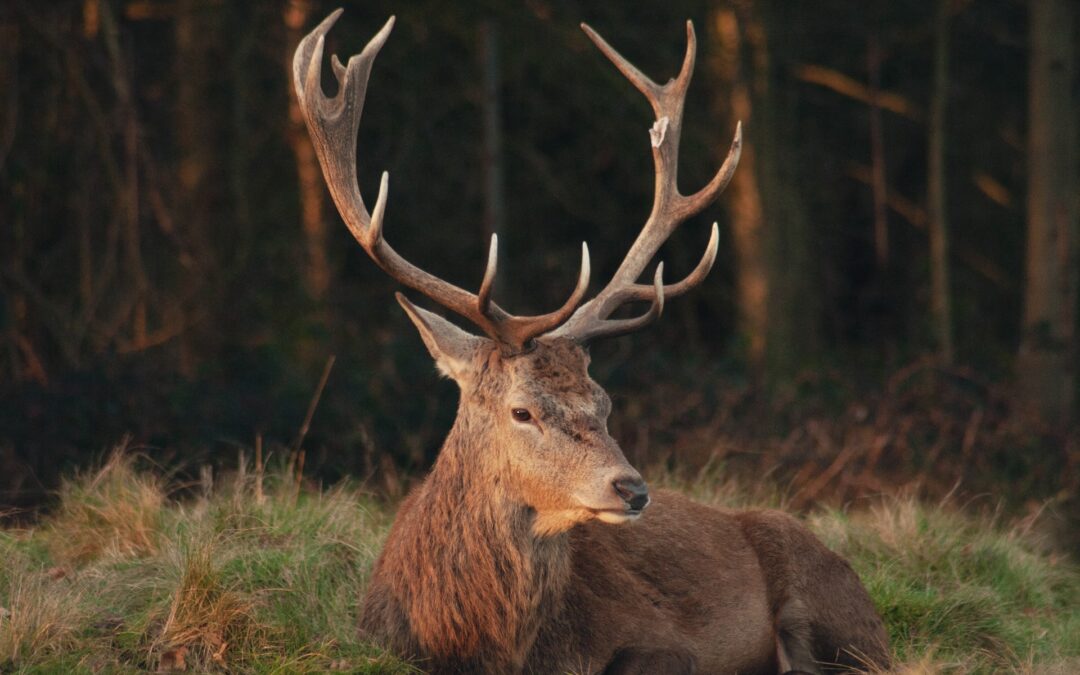Oak Creek Whitetail Ranch has been recognized with the records for 33 of the top 35 whitetail deer! So, we know a little about hunting whitetail. Our May blog details how, when, and where to use a grunt call.
Whitetail Sounds
Whitetail deer sounds can be described in four categories: grunts, rattles, bleats, and snort wheezes.
- Grunt– Deer are very social animals, and they try to assemble often, so a grunt is the deer’s way of telling others it’s around and ready to mingle. The mothers also grunt to call their fawns if it’s feeding time or if they’re moving to a new location.
- Rattling – This is a deer calling sound to simulate two bucks fighting.
- Bleats – Mimics the sounds made by does and fawns. Does will make this sound all through the year, but especially during the rut when being sought out by bucks. Fawns make a bleating sound to communicate with their mothers.
- Snort Wheeze – The snort wheeze is a dominance call. Mature bucks employ this sound to threaten subordinate bucks. The sound consists of two short surges of air followed by one longer one.
What is a Grunt Call?
Grunt calls are easily the most used deer calls by hunters to attract bucks. These easy-to-use tube designs allow you to grunt like a buck, bleat like a doe, bawl like a fawn, and create every other deer vocalization you can imagine. Inexpensive versions of the grunt call are priced between $10 and $23, while more elaborate versions can be as much as $80.
How to Call a Buck?
If you want to tag a deer, speak his language and use a grunt call. Puff five or six moderately loud grunts at 20-to-30-minute intervals. Keep in mind a real buck grunt is often much softer than we envision, and it sounds almost like a pig oinking. The calls should sound like urrrrppp, urrrrppp, urrrrppp. Use 5- to 10-second sequences. The closer a buck is to you, the softer you should call.
When to Call a Buck?
The best time to utilize a buck grunt call is during the fall months and breeding season. During the peak rut season, bucks are on the prowl, sparring with other bucks, rubbing trees, and creating scrapes. They are keen to locate does, as well as answer the calls of bucks looking to challenge their dominance.
It is best to use a grunt call to lure in bucks within earshot. Every half hour, sound off two or three medium grunts with your buck call. The call will get their attention and bring them in. Blind calling (calling a deer you can’t see) can work, but a grunt call shines when a buck has been spotted. Employ the grunt call at every buck you see that is slipping by out of range.
If a buck can see you, don’t blow the call. If a buck is passing through and appears to be on alert, do not call. All you will accomplish is to pinpoint your location. On the other hand, if a buck is coming through the woods slowly zig-zagging with his nose to the ground trying to wind a doe in heat, that’s when to employ your grunt call.
Three Closing Tips
- Be ready. Make sure to have your bow ready and arrow nocked or your gun in a prepared position prior to starting your deer calling sequence.
- Start soft. Start soft and slowly build up to project the sound out farther.
- Mix it up. Don’t rely on just one type of deer call. The transition from one call to another is more effective and depends on the time of year and the deer hunting situation.
The more you know, the better hunter you will become. For more facts and tips about whitetail deer visit our website at https://oakcreekwhitetailranch.com/.


Recent Comments